Thanks to its geographic diversity, vibrant culture, relatively low cost, amazing cuisine and, of course, the ancient ruins of Machu Picchu, many consider Peru an almost obligatory trip in South America.
It’s a classic backpacking destination for sure and it’s not too difficult to travel in Peru — especially if you follow the typical route outlined below. Peru will be an excellent choice even if it’s your first time.
Whether you’re looking for a shorter “best of” introduction to Peru or wish to explore every nook and cranny of this incredible Andean nation, this complete guide to backpacking Peru is here to help.
Plan your trip to Peru
What to Expect
Epic landscapes
If I had to pick the best Latin American country based on its variety of landscapes alone, Peru would be the hands-down winner for me.
It’s mostly known for its wild and soaring Andean Mountains, which stretch all the way from Lake Titicaca in the south up and through the central and northern regions of Peru.
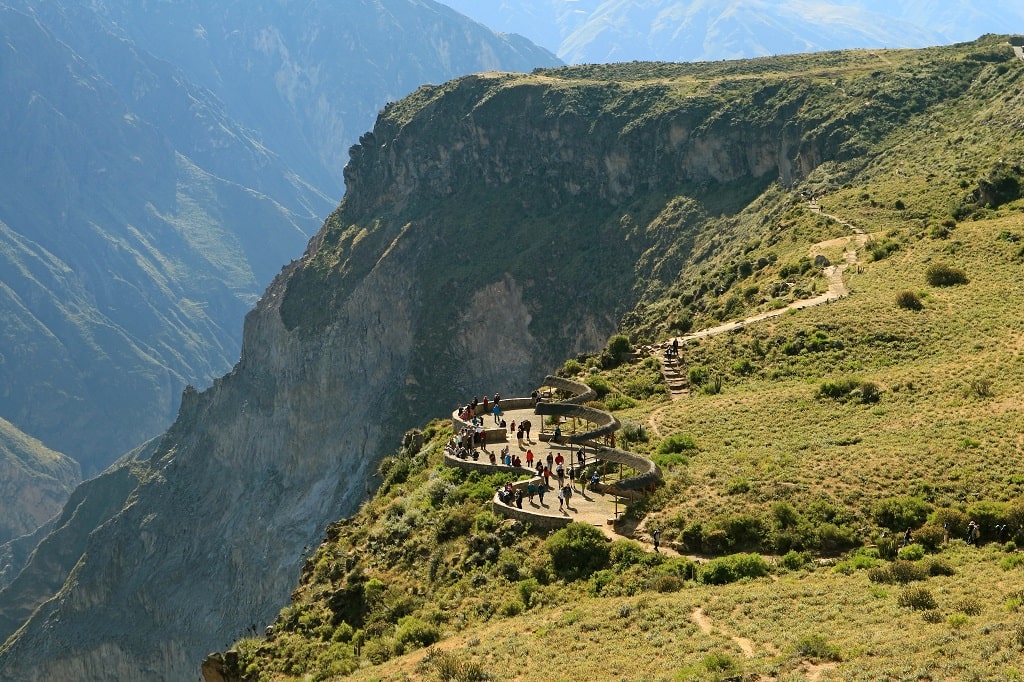
Then we have the remote jungles. Engulfing over half of the country, the Amazon jungle is the most biodiverse region found on Earth. Here you can embark on multi-day tours exploring the deep rainforest, where you may see many beautiful animals such as the pink river dolphin, jaguars, caiman and sloths.
There are other striking landscapes you otherwise wouldn’t have thought would be in Peru. This includes hot, arid deserts (which are home to some of the tallest dunes in the continent!) as well as tropical Pacific beaches that lie along the north coast.
Rich cuisine
In recent years, Peruvian food has made its way to the top of the most exciting and sought-after cuisines on earth. All over the country, we can find many exotic and tasty dishes.
Ceviche is the signature dish, which is a dream for seafood lovers (and even those who aren’t keen on fish will still want to give it a go).
There are also many local staples which are worth trying. Papa a la Huancaina is a potato-based dish made with a creamy sauce as well as an egg, which has its origins in the remote mountains but is now eaten just about everywhere in Peru.
The better-known Lomo Saltado is a popular Arequipeñan dish made out of vegetables, sirloin strips and potato chips.

If you want to try the very best dishes you’ll want to head to Lima, which is the gastronomical king of the country. Here you’ll find many top restaurants in the districts of Miraflores and Barranco, which cater for all types of travellers and tastes.
It’s also worth heading to the local canteens. Not only do they specialise in Peruvian foods, but they’re also very cheap (perfect for a backpacker on a budget). Here you can select a menu ejecutivo, which includes a starter, a main as well as a refillable drink.
You’ll also find some unorthodox foods. One of these is the infamous Cuy (Guinea Pig) which is a national delicacy, although you’ll find it more within the Andean regions. I remember trying it for the first time in Arequipa, and whilst the presentation was slightly off-putting, it actually tasted pretty good!
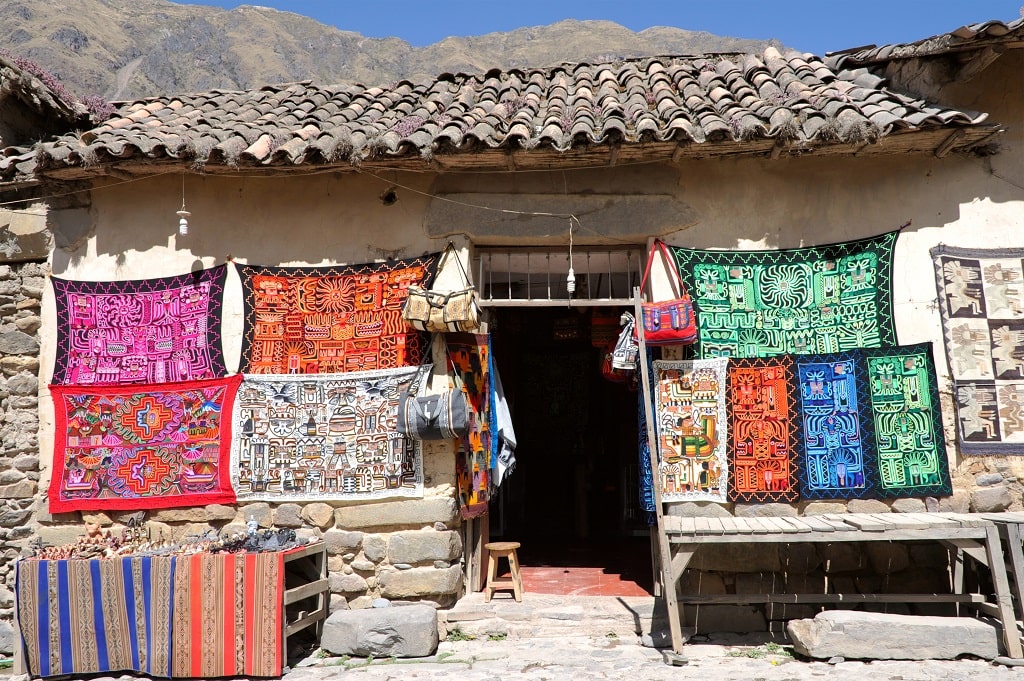
Authentic culture
South America as a whole is home to numerous colourful and mysterious cultures, but Peru has one of the most deeply ingrained and interesting of all.
Although many of the earliest civilisations are long gone, what they’ve left behind in some areas is still very much alive today.
In regions such as Cusco and Trujillo, there are many ancient temples and sites that are well-preserved, and give us an insight into how these ethnic groups once lived. These range from the infamous Inca to the tribes that pre-dated them such as the Caral, Chavín and Moche.
When travelling around Peru, you’ll also encounter many traditions and customs that will make you feel like you’re really getting to know the heart of this South American country.
For example, in the mountainous Andean regions, many locals still wear traditional Peruvian clothing such as chullos, which are insulated hats made out of Alpaca wool. You’ll also often find yourself in the middle of the bustle too, given busy plazas and hectic markets are all part of the Peruvian experience.
Peru Backpacking Route
When you’re planning your Peru backpacking trip, you’ll find the country is essentially divided into a touristy and non-touristy part. Each has its own advantages and disadvantages.
I highly recommend first-time travellers in Peru to head to Lima and start with the touristy southern loop.
This way, you’ll gently ease into the country, and learn how things work and how to get around. These areas are more tourist-friendly and are somewhat easier to navigate using limited or no Spanish.
This is what I did for my first two months. By then I felt more than ready to head off-piste and enjoy the more authentic, raw Peru.
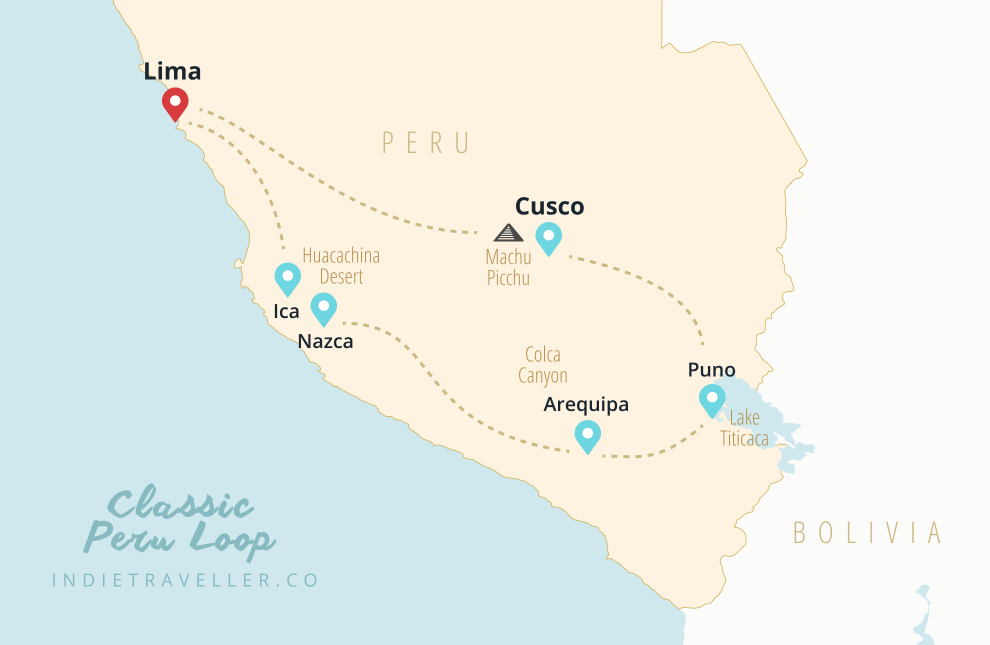
The touristy parts (the South and Iquitos)
The majority of the touristy part is found in the south. It actually forms a loop back on itself which makes it really easy to get around (and also to meet other travellers along the way).
These destinations include Lima, Ica, Nazca, Arequipa, Puno as well as Cusco. It also includes the remote Iquitos, only accessible by flight from Lima. While it isn’t a part of the main loop, it’s the most popular option for those who want to head into the jungle.
The classic loop contains the real highlights of Peru and delivers the “wow” factor that many travellers are looking for. Legendary sites such as Machu Picchu, the Colca Canyon, Lake Titicaca and Huacachina are all located here, and will come thick and fast on a trip through these regions!
You’ll find a variety of awesome hostels, tour providers and nightlife in all of these places. It can of course feel quite over-touristy at times, given pretty much all travellers will be heading through here at the same time.
The non-touristy parts (the Center and North)
This is where the real fun begins! This route is a must for more independent travellers as well as those looking for novel experiences.There are a ton of worthwhile destinations in this area, though the very best include Huaraz, Trujillo, Chachapoyas, Cajamarca, Chiclayo as well as Piura. (The latter is popular in areas like Máncora for its beaches, so it maybe doesn’t quite count as “non-touristy”, but I include it here given how well it fits this itinerary.)
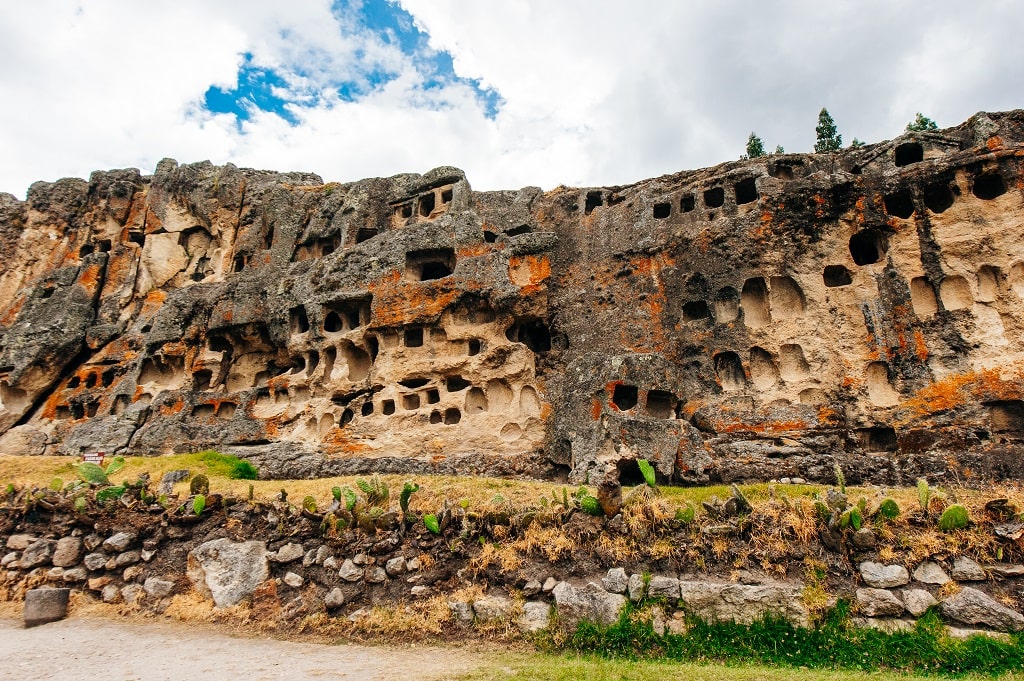
You’re going to find less of a gringo vibe in these areas and much more authentic Peruvian culture. This makes it the perfect place to learn more about the real Peru, as well as other cultures and deep traditions you otherwise wouldn’t see in the south.
Some of the highlights include hiking through the Cordillera Blanca, as well as visiting the incredible waterfalls of Gocta and Yumbilla.
Accommodation and eating options are going to be less westernised, so you’ll need to adjust your expectations (and come with an open mind).
You may find locals are more focused on their livelihoods rather than the tourism industry. However, this is the real Peru, and travelling here will help you to understand the country and people on a deeper level.
Travel here can offer its own particular set of challenges. Sometimes the road quality can be pretty poor, resulting in some delays or setbacks. This happened to me when I took the 12-hour bus from Cajamarca to Chachapoyas — which ended up taking around 17 hours! It’s all part of the fun and games of Latin American travel.
Getting Around Peru
The ease of getting around Peru will depend on the regions you visit.
Buses in Peru will always be king given how cheap they are (as well as the quality and abundance of operators), though flying can be a good option as well if time is short.
The touristy southern parts are very easy to get around. Each city has a major bus terminal, which is usually heaving with dozens of bus companies.
An alternative to using public buses, Peru Hop is a tourist-targeted bus company that’s popular with backpackers. It provides private transport between popular Peruvian destinations. Whilst more expensive, it offers you more freedom than a conventional tour.
So what about the less touristy northern parts? They’re more challenging, but not impossible. There are daily buses between the destinations, though there will often only be a few daily, so you’ll need to organise yourself a bit better.
Travel distances are also likely to be longer and the road conditions worse. Having spent several weeks travelling through these regions, I highly recommend making good use of the local colectivos (shared minivans) which are more frequent and often cheaper than traditional buses.
Not all buses can be booked online, but it’s easiest for the popular routes between cities. You can book buses in Peru at 12Go.
Time Needed
This really depends on you and what you want out of your trip to Peru.
2 weeks would be the minimum amount of time I’d recommend. Whilst not ideal, it’s possible to see many of the highlights. You may feel a bit rushed, but you can visit Lima, Ica, Arequipa and Cusco within this time frame.
4-6 weeks is an ideal trip length for Peru. You can spend longer in the above destinations, as well as including the northern hiking mecca of Huaraz or the Pacific beaches of Piura. You can dive deeper into the culture and enjoy certain experiences without feeling rushed (such as the Inca Trail and treks through the Amazon Jungle).
You can also spend up to the full 12 weeks (the maximum time granted for a tourist visa). This is what I did, and it gave me an incredible insight into the real Peru as well as getting to know the locals on a more personal level.
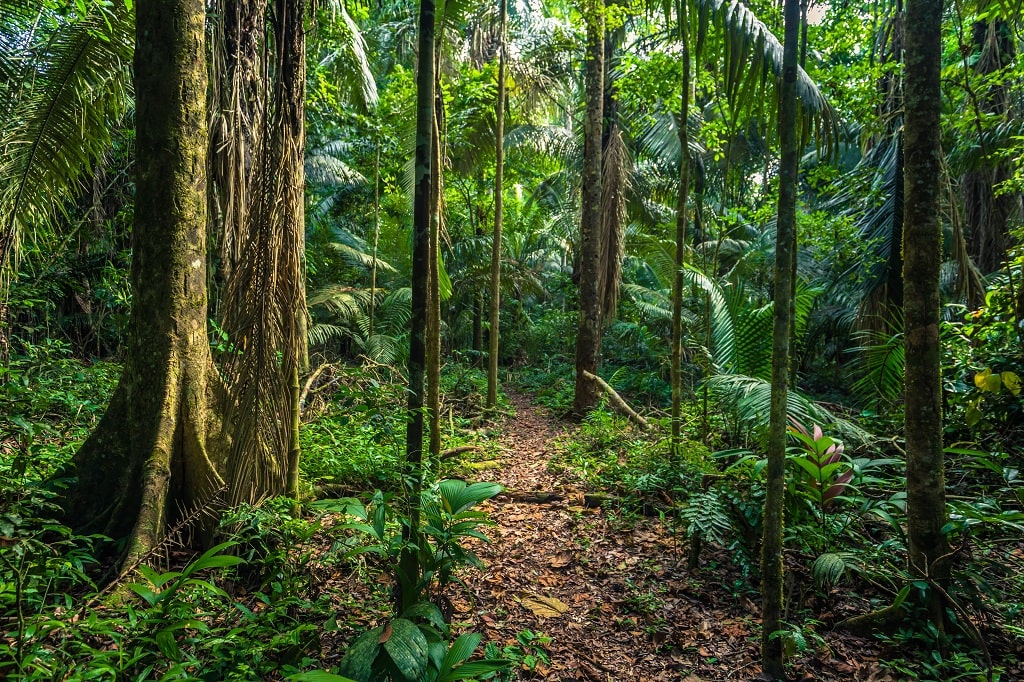
Staying Safe in Peru
As with travelling within any Latin American country, safety is something that needs to be taken seriously. Even just a bit of pre-planning (and some precautions taken) can make your experience in Peru much more enjoyable and smooth.
Firstly, know how to get around cities and between regions. Whilst traditional taxis are okay in some parts, it’s better to use Uber since they are registered and have a much smaller chance of robbery or scams. When travelling on buses, always use padlocks on your bags to keep your valuables safe.
The second part is how you conduct yourself when out and about, whether that’s walking the streets, exploring a market or partying in a busy nightlife area. Always keep valuables at home (such as your passport and credit cards). Dressing down is sensible in most contexts too, as you’ll draw less attention to yourself from opportunistic thieves.
A good rule of thumb to use when travelling Peru (or any country to be honest) is to think the following: “How can I minimise my level of risk at this exact time?”. This is what has kept me and other long-term travellers with very few issues.
Get insurance for Peru (includes trekking)
Travel Advice
Travel insurance will cover you for theft, medical expenses, cancellation, and more. Heymondo offers great coverage, no excess or deductibles, and an app with 24/7 assistance & doctor chat.
5% Off With Indie Traveller
Accommodation in Peru
What’s the hostel scene like?
Peru has one of the best hostel scenes in South America. You’ll find many sociable and affordable hostels (as well as more intimate or quiet ones too).
Some of the very best hostel scenes can be found in Lima (Miraflores), Cusco, Máncora and Arequipa. The hostels here are mostly aimed at younger travellers who like to meet others, and the majority have high-quality dorm rooms as well as an on-site bar.
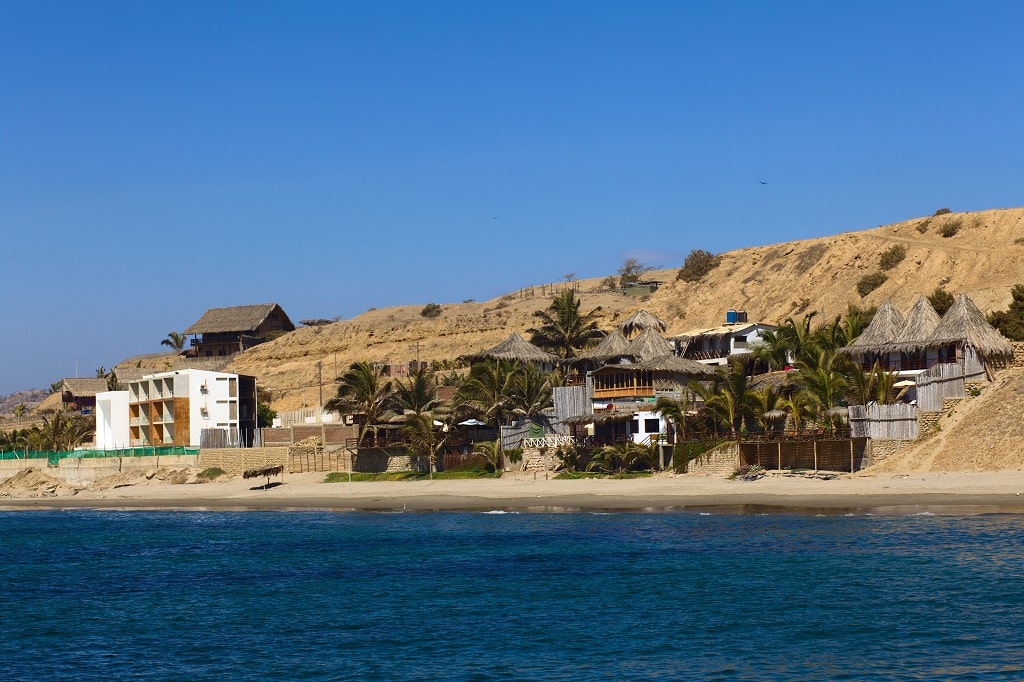
Many will also offer discounts on activities and tours when booking directly through them, so it’s always worth asking on arrival what offers they have.
You’ll also find many hostel chains throughout Peru too, which is great as you can pre-book knowing what to expect.
Those who love to throw down and party several nights a week will want to stay at Wild Rover or Loki, who host some pretty crazy parties (especially in Cusco and Máncora).
Selina also has hostels in the majority of destinations too, which have a more quality feel along with better facilities (such as high-quality Wifi and an on-site restaurant).
Some of the best hostels in Peru
$$ Lima (center)
1900 Backpackers Hostel
Hostel based in a renovated colonial era building. Located in the historic center.
$$ Arequipa
Friendly AQP Hostel
Great family-run hostel; basically feels like you’re living in a house with other travelers.
$$ Cusco
Hospedaje Turistico Recoleta
A relaxed (non-party) Cusco hostel with a friendly atmosphere.
$$ Huacachina
Banana’s Adventure
The poolside bar makes this a great choice in this desert oasis.
What about hotels or guesthouses?
Those looking for more privacy or a more cultural experience will also be in good hands when travelling through Peru.
You’ll find numerous hotels that range from budget ($15-20 a night for a private room) to luxurious ones that offer a much more deluxe experience (anywhere from $40 upwards). In my experience, the service has been very good, and the hotels themselves tend to be strategically located (either close to a popular landmark or near the Plaza de Armas).
Those who are looking for a guesthouse can also find a variety of options with Airbnb being a particularly great platform. Travellers that want to further reduce costs or don’t mind working on some days can also participate in programs such as WWOOF. Here you’ll work just a few hours a day in exchange for staying with a local family with all meals included.
How to find accommodation in Peru
Regardless of where you are heading, you’ll find the majority of hostels and hotels on online apps. This is great since you can pre-book in advance and check reviews.
Some of the best apps are Booking.com as well as Hostelworld, which are perfect for budget travellers. You can easily compare using the different categories on the apps, which will help you find the right scene or experience that you are looking for.
You can also do what I did a lot — and turn up at the hostel without booking in advance. Many times I got a cheaper price this way, and you can also choose which room you want to be in instead of being automatically allocated like usual.
Peru Backpacking Costs
How much should I budget?
Peru is one of the cheapest countries to travel in Latin America (especially when compared with the more expensive countries such as Brazil, Costa Rica and Chile).
What is surprising is that costs are more or less the same whether in the less-touristy areas (such as Chachapoyas or Ayacucho) or in the more popular cities (Cusco, Lima etc).
If you’re on a backpacker budget, expect to spend around $20 a day in Peru. You’ll be staying in a comfortable dorm room and sometimes even in the nicer chains (such as Selina).
You’ll be mostly eating in local restaurants, or cooking at your hostel. You’ll be using the local colectivos or the more fun moto-taxis if they’re available in your destination.
For a more comfortable experience expect to spend $30-40 a day. At this budget level, you can easily upgrade to a nice private room with an en-suite bathroom, and can also eat out at nicer restaurants and order takeaways more often.
When it comes to getting around, you’ll be able to spend more on Uber or private taxis and spend less time waiting around.
Typical daily costs
Here are some basic costs you can expect to spend when travelling through Peru.
- Dorm Bed = 20-40 Soles ($5-10)
- Private Room = 60-80 Soles ($15-20)
- Meal at a Local Restaurant (Menu Ejecutivo) = 8-14 Soles ($2-3.50)
- A Standard Meal at McDonald’s or Burger King = 15-20 Soles ($4-5)
- A 15-Minute Local Colectivo Ride = 1-3 Soles ($0.30-1)
- A 15-Minute Uber Ride (e.g from Miraflores to Barranco) = 6-12 Soles ($2-4)
- Bus from Lima to Cusco (22 Hours!) = 95-115 Soles ($25-30)
- A one-way flight from Lima to Cusco (with baggage included) = 220-300 Soles ($60-80)
- A Half-Day Tour in Cusco (through local agencies) = 40-80 Soles ($10-20)
- Machu Picchu Tour = 220-380 Soles ($60-100)
Of course, these costs can vary, but in my experience, they don’t change that much (even between different destinations).
How to Save Money when Travelling Peru
I’m now going to share some of my best money-saving tips, based on having spent around a year both travelling and living in Peru.
Take Advantage of the Menu Ejecutivo – By far one of the best-value eating options in Peru (and in other South American countries). You’ll have a starter (usually a Soup or Papa Rellena), a main (chicken or vegetable-based dish) as well as a refillable drink. They tend to really pile on the amount of food too, so you’ll be feeling pretty nice and full after.
Be Flexible with Bus Schedules – When travelling between destinations, you’ll find online sites like RedBus or 12Go to make it easy to plan in advance. Those with a more open schedule can head directly to the terminal and jump on the next departing bus. The bus companies slash prices heavily to sell those last seats, and you can save as much as 50% on any particular route!
Make Friends with Locals – Not only will you have a more inclusive and authentic experience in Peru, but you’ll also learn many local tricks to saving too. This includes how to take local colectivos in Lima, the cheaper (yet still good quality) restaurants as well as inexpensive fun things to do. You’re also less likely to get overcharged for taxis too!
Peru Backpacking Destinations
Ranging from bustling cities to small desert and coastal towns, here we’ll explore some of the very best places to visit in Peru.
It’s a good idea to do your own independent research on Peru too, as what you want to see and do may be different to me and other travellers. And who knows, maybe you’ll find an unknown gem that little other travellers know about!
Lima
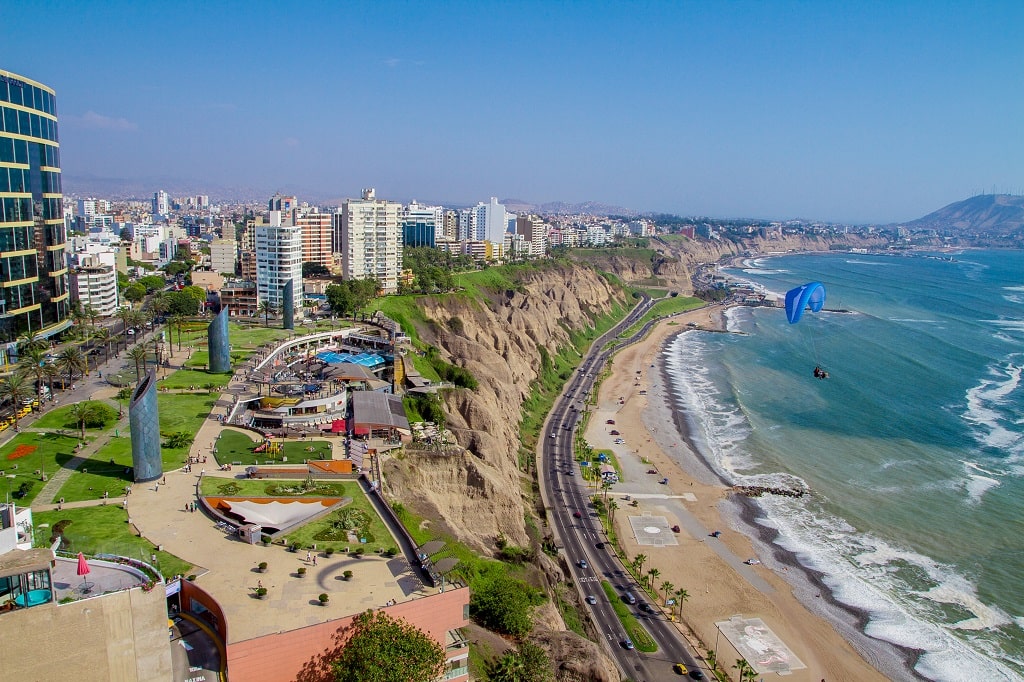
The capital is much more than just an entry point into Peru, and I feel that many travellers really miss out on what Lima has to offer.
Lima is famous for its Costa Verde coast, which stretches along the entire length of the city. It’s the perfect place to go surfing, given it has consistent waves rolling in at all times of the year (just be prepared for some pretty chilly temperatures between May and October).
The districts of Miraflores and Barranco are perfect bases, which are much more modern and safe than the rest of the capital.
You can easily rent a bike with CityBike to explore these areas and make stops at the ruins of Huaca Pucllana, Parque Kennedy as well as the infamous Graffiti streets of Barranco (Jirón Dos de Mayo as well as by the Puente de los Suspiros are two of the very best).
Peruvian cuisine is also some of the very best in South America, and Lima is the perfect place for trying its varied dishes such as Ceviche, Papa a la Huancaina as well as Lomo Saltado. Those on a budget can head to Aries in Miraflores, whilst those after a unique, more-expensive experience will want to visit Central in Barranco.
Cusco
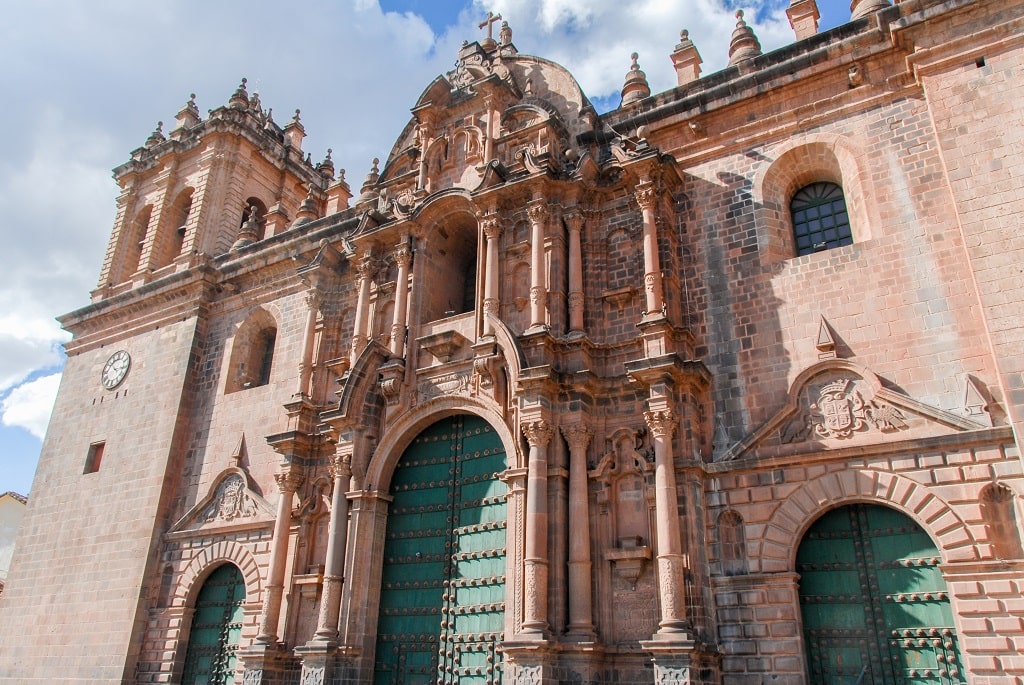
Cusco, a colonial city, is the true king when it comes to travel in Peru, given it has pretty much everything you could ever want in a destination!
You’ll find an abundance of beautiful architecture, where picturesque plazas, arched buildings and spiralling cathedrals dominate the streets. Walking through the Historic Centre and San Blas neighbourhoods you’ll see the very best, although you can’t beat the birds-eye views from the Mirador of San Cristóbal.
Cusco is also perfectly nestled within the Andean mountains, making it a great base camp for exploring the nearby Sacred Valley. There are various ancient sites worth visiting such as Moray, Saqsaywamán and Chinchero, each giving a great outlook on what life in ancient Peru was like (not to mention how advanced civilisations like the Inca were during their time).
There are also many beautiful landscapes that vary from alpine lakes to towering peaks, which can be explored on day trips from Cusco. Ausangate National Park is perfect for those getting adjusted to the higher altitudes, whilst of course, Machu Picchu is the absolute must-see (more on this later).
Those after the ultimate experience will want to head on either the Inca Trail or Salkantay Trek, which are multi-day treks where you’ll see some of the most breathtaking landscapes of your life.
Cusco is one of the places with a high potential of getting altitude sickness — or soroche as they call it in Peru. I remember getting ill more times than I can remember when in the high-altitude Andean regions, and in Cusco it was particularly bad (many headaches and even a nosebleed one time). Be sure to take your time to acclimatise, and to drink Coca Leaf tea which helps ease the symptoms.
Machu Picchu
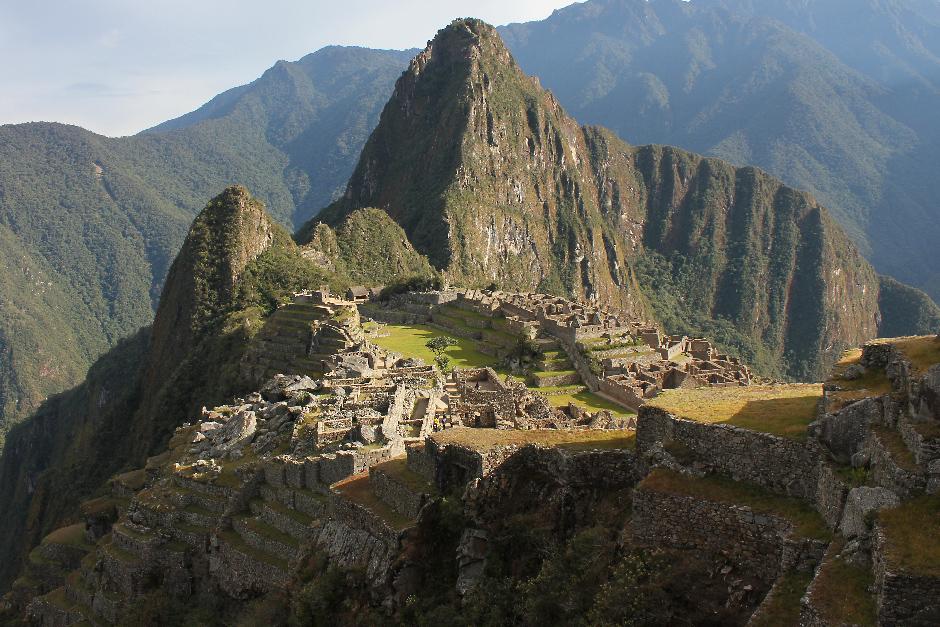
This legendary citadel is one of the best highlights on any trip in Peru, let alone in all of South America!
Constructed by the Inca civilization around 1450 A.D., Machu Picchu was an important fortress and spiritual site that was built for the emperor Pachacuti. As well as having an incredible backdrop of tall mountains and a low-lying mist, the site itself is also perched on top of a ledge which makes for an unforgettable panoramic vista.
I had dreamed of seeing Machu Picchu for years, and when I finally arrived it really was as surreal as everyone claims it to be (there’s a reason why I’m planning on heading back for another visit!).
Getting here is already half the adventure. The majority of travellers hike along the infamous hidroeléctrica track to the town of Aguascalientes. Here you’ll spend the night before making the ascent the next day.
For those who are in good physical condition, the Inca Trek is a more memorable way of reaching Machu Picchu where you’ll spend several days hiking through jagged peaks and alpine lakes within the Sacred Valley.
Regardless of what option you pick, you’ll first need to head to Cusco, which is where all roads lead to Machu Picchu. I highly recommend browsing different tour agencies in the Plaza de Armas before committing to the first you see, given they are competitive with price and also can offer extras too.
Whilst the hike is not too demanding altitude-wise, be sure to spend a couple of days in Cusco first so your body can adjust.
Arequipa
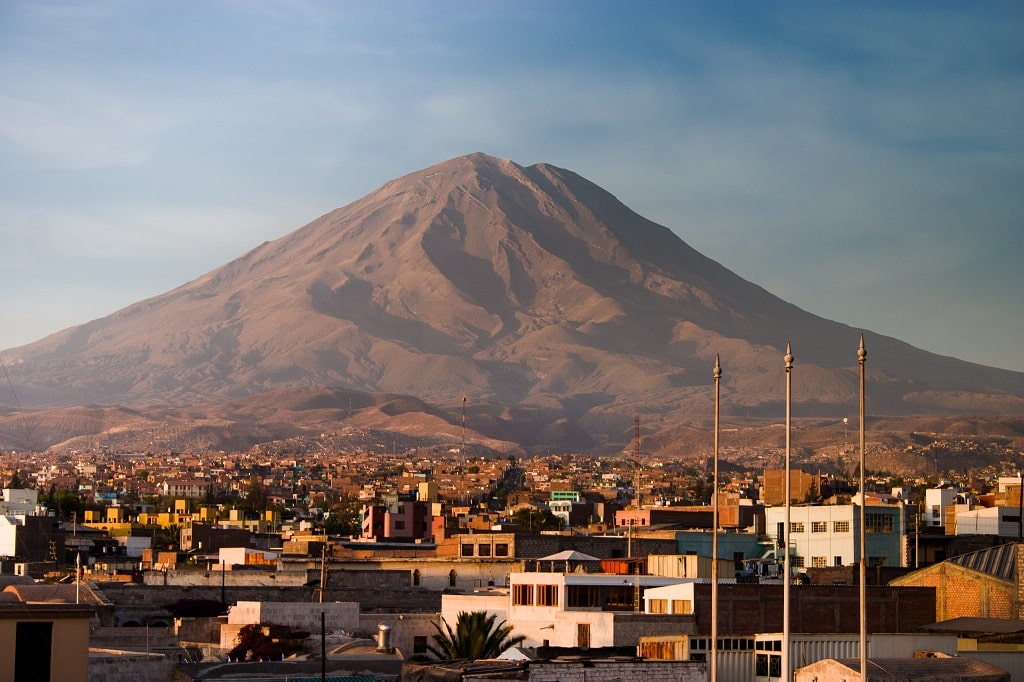
Arguably one of the most beautiful cities you can visit in Peru, Arequipa is also a perfect destination for those who love nature and adventure.
Although Arequipa is the second largest city in Peru, it still boasts a charm that makes it one of the most popular destinations to visit.
Much of the city is constructed out of sillar, which is a white, volcanic-based rock that is collected from the nearby arid lands. The Historic Centre and Yanahuara districts are the best places to see these picturesque designs, and in the latter, you can get some awesome sweeping city views from the mirador too (with the giant volcanoes looming in the distance).
Speaking of which, these giant, fiery formations are also perfect for hiking enthusiasts. El Misti and Chachani are the most challenging, both of which exceed an altitude of 5,500m.
You’ll need to be in good physical condition for the climb, as well as bringing coca leaves or medications that help with alleviating symptoms brought on by altitude sickness.
The surrounding regions of Arequipa also make for some memorable day trips from the white city. Sillar Valley is a must, which is home to some incredible rock formations, as well as Chivay, which is an ancient town that still lives in its traditional ways despite the pressures from a more modernised Peru.
Colca Canyon

No trip to Southern Peru can be complete without visiting The Colca Canyon, which is one of the true natural wonders of Peru.
Known as the second deepest canyon on earth, Colca Canyon is full of towering mountains as well as a deep valley within that goes on further than the eye can see. With an area that is three times as large as the Grand Canyon, you can easily spend days (if not weeks) exploring every nook and cranny.
The Colca Canyon is also one of the very best places to witness the stunning Andean Condor, which is one of the world’s largest birds. There’s a mirador at the top which is perfect for spotting them, with the early morning being their most active hours.
I recommend those who are short on time to go on an organised day tour from Arequipa, as they’ll transport you between the most scenic areas. Those who are more independent can take public buses to Chivay, where you can then explore these beautiful landscapes at your own tempo.
Just be sure to bring lots of layers since it regularly reaches freezing temperatures during the night.
Lake Titicaca
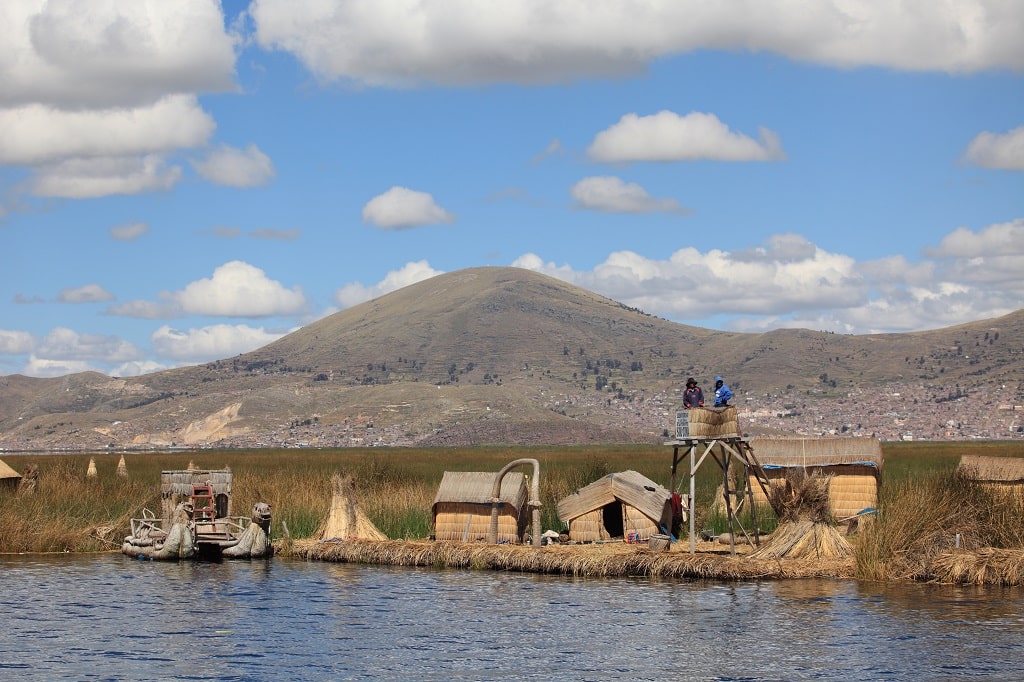
Lying within the extreme south of Peru, Lake Titicaca is a giant body of water that is shared with neighbouring Bolivia.
Sitting at an average altitude of 3812 m above sea level, it’s officially the highest navigable lake on Earth.
One of the overall best things to see here is the Uros Islands, which are made entirely out of Totora Reed and float within the lake. There are several tribes who live here such as the Uru-Murato, and here you can visit their community and also take a ride out on their awesome, dragon-style boat.
Lake Titicaca also holds much historical and spiritual importance to Peru. It was believed to be the birth of the sun by the Inca, and as such many ancient ruins found here pay homage to this great lake. One of the very best is found on Taquile Island, which can be reached by boat within a few hours.
Puno is the gateway to Lake Titicaca on the Peruvian side, and from here there are many local boats (as well as organised tours) that will take you out to the different sites.
You’ll need to bring both a thick layer for the cold, as well as sunscreen too given it’s actually quite easy to burn when out on the lake during the midday sun!
Huacachina
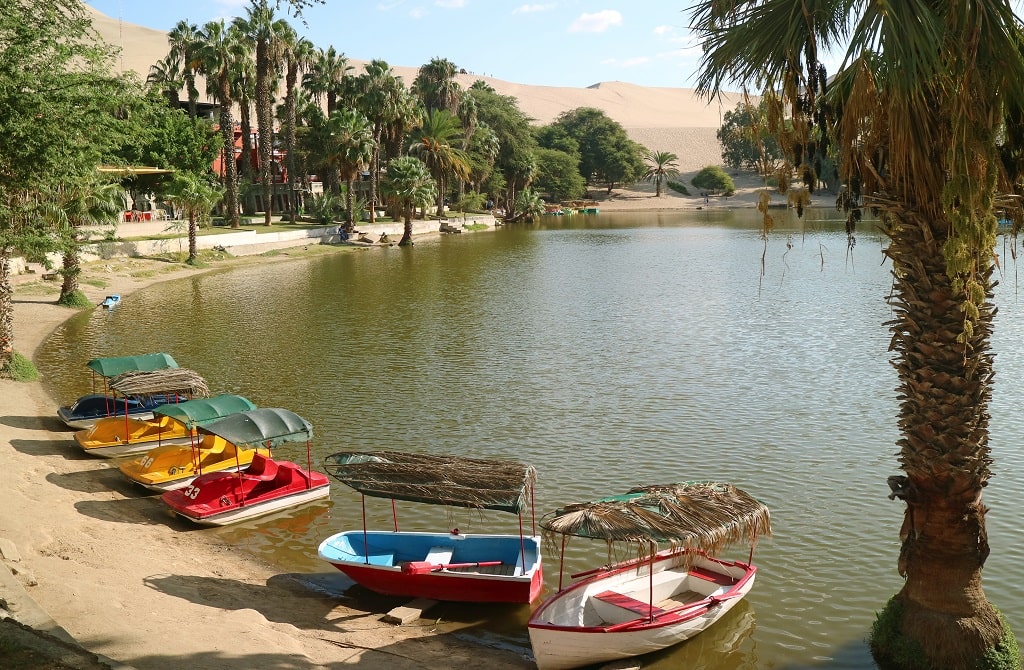
Those who are looking for a desert paradise need to look no further than Huacachina, which is a small oasis town located within the Ica Desert in Southern Peru.
Huacachina is surrounded by dunes that rise as high as 1,600 ft, which are amongst the highest on the continent. It’s worth walking up these in the early morning or evening (bring lots of water) for a stunning panoramic view over the desert town.
You can walk around the town in under 20 minutes, but despite its small size, it’s one of the most popular destinations in Peru. It also has a thriving hostel scene, so rest assured you’ll have a good time at one of the numerous hostels with their on-site swimming pools.
One of the best things to do here is to ride down these massive beasts, where you’ll lie on a wooden plank and hold on for dear life. Known as sandboarding, there are various companies you can go with that also include a buddy ride over and around the dunes.
The 4:00 pm slot is by far the best one to head on, where you’ll be greeted with a picturesque sunset after you’ve enjoyed your time on the sands.
You can also use Huacachina as a home base to visit nearby Paracas and the infamous Ballestas Islands. When I made the trip, I left early in the morning on a mototaxi and was there within a couple of hours. Not only was it a cheap way of getting around —
there’s nothing quite like riding in a doorless pod with Cumbia music blasting from the speakers!
Should You Know Spanish?
Whilst I’m fluent in Spanish, I’ve certainly met many travellers who weren’t, so can give you some good perspective on what to expect.
Peru is mainly a Spanish-speaking country, though more remote areas speak Quechua and other indigenous languages.
Despite a high level of tourism in some parts, most locals have a poor grasp of English, meaning you’ll need to know a little bit of Spanish to get by in the markets or when out and about. It’s worth learning basic questions for necessities such as food, accommodation and other travel-related vocabulary.
Aside from this, the level of Spanish you’ll need really depends on what you want from your experience in Peru.
There were certainly many travellers who just use finger-pointing to get by. That’s completely fine given they mostly spent their time with other English-speaking nationalities.
However, knowing even basic Spanish really opens up doors for you. Not only can you make friends with locals and get to know Peru more intimately, but you’ll also find locals are more patient and warm towards you too. Even just a few words will make locals smile and be more receptive to helping you!
Peru Travel Tips
Having spent over 5 months travelling all corners of Peru (followed by over half a year living here too), I’ve pretty much seen it all now.
This means I’ve made my fair share of travel mistakes, as well as having learnt some good tips for travelling more efficiently and safely.
These Peru travel tips will not only help make your trip go smoother but will also make it a more memorable one too.
Stay near the Plaza de Armas
One of the biggest conundrums is working out where it’s best to stay, which is often made more confusing since hostels and apartments can be located all over the city.
In almost all cases, I’ve found that the Plaza de Armas (which is the main square) is the very best place to base yourself. You’ll be in the heart of the destination, with lots of restaurants, hotels and nightlife close by.
The only exception to this is in Lima. Whilst there’s lots to see, the area is not so safe and I’d instead recommend staying in Miraflores or Barranco further south, which has a much better atmosphere.

Prepare for all climates
The different climate conditions in Peru can be quite a surprise for travellers. Containing as many as 90 different microclimates, it’s one of the most diverse countries on Earth!
From the hot and humid jungle to the dry desert and the freezing Andes, you’ll experience it all here. This means you’ll want to pack some light layers to prevent overheating, as well as thick jumpers and coats to keep warm when hiking the mountains.
If you’re already in Peru and forgot something, then you can easily pick up what you need from the local markets.
Keep an open mind
This is ultimately the best piece of advice I can give to any traveller coming to Peru.
For example, when deciding what to eat, this means being open to trying something new or browsing the local food markets for exotic herbs and ingredients.
Peru is also home to a deeply-ingrained culture too, such as the shipibo shamans who lead Ayahuasca Ceremonies (within the Amazon Jungle). There are many powerful benefits from taking part in a ceremony, just be sure to find a reputable company or shaman before taking part given this is serious stuff.
In my case, I arrived in Peru probably the most open I had ever been in my life, and what followed was an extremely memorable first 3 months. I ended up taking Ayahuasca in the remote Amazon jungle, joining local protests in Arequipa, eating Surri with locals in Yurimaguas and also hiking some of the most incredible peaks I have ever seen in my life.
And that’s only what I thought up in the last 120 seconds…
Take the higher altitudes seriously
Besides the varied climate, Peru is also home to various altitudes across the country. These start to become noticeable as you go higher than 2000m, where breathing can become a little more difficult and forced (such as in Arequipa).
Those looking to explore the Andes will ascend even higher, with cities like Cusco, Puno and Huaraz all located between 3000-4000 m above sea level. At these altitudes, it’s common to experience altitude sickness, with symptoms ranging from dizziness and pounding headaches to vomiting.
I recommend drinking coca leaf tea to ease symptoms, or to take soroche pills (can be bought in any InkaFarma) before heading on a high-altitude tour.
Some links may be affiliate links, meaning I may earn commission from products or services I recommend. For more, see site policies.
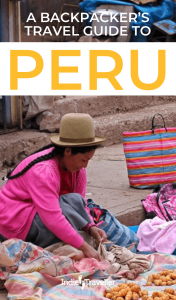
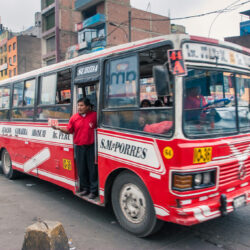
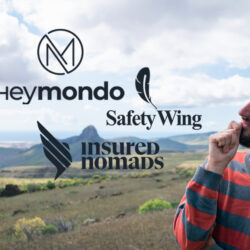
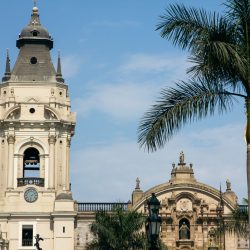
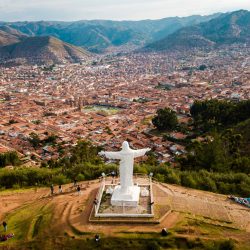

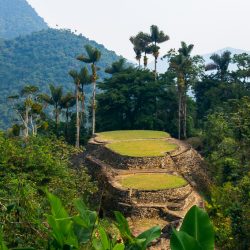
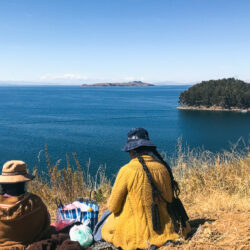




Recently had a friend come back from Peru and inspired me to start planning my trip. Love this resource, thank you!
This was so helpful! Great information and very explained. Thank you so much!
Awesome Marek! Happy 2018 and incredible post that helps me a lot planning my journey to Peru this summer, thank you! One big question, the Rainbow Mountain is one of the new attractions out there, how come that you haven’t been there? I am still not sure if this will be a great tour as many say it’s pretty tough. But I found an alternative on Tripadvisor and maybe this could be helpful but I’d like to hear your opinion too. Look here how they compare both treks. Can you somehow relate to that?
Don’t have any experience with it but it looks interesting…
Thanks a lot!
I really enjoyed reating this 🙂
Greetings from Germany
Hi Marek,
Thank a lot for all what you do. I have already your book and it is amazing.
Im planning trip for 2,5 months (October-mid December).
Start in Nicaragua for 3 weeks, fly to Ecuador, stay in Ecuador 10 days, Peru for 3 weeks, Bolivia 3 weeks.
Do you think so that is good time for weather?
Thank you, take care.
Regards Pavel
Hey Pavel! Thanks 🙂 I think you’ll be going through the shoulder seasons in most those countries which is great. Once you get to Bolivia you might find yourself at the start of the rainy season there. But given that there’s many different elevations and climates within Bolivia you should be able to work around it. Seems like a good itinerary!
Hi, I’m planning on backpacking solo in Peru this summer, do you recommend booking hostels in advance (Cusco, Lima etc) or just turn up and pay on the day?
Hey Zan. Well, you can just turn up, as there’s tons of hostels and you can always find a bed somewhere. But it’s worth booking 1 step ahead as you travel (e.g. booking something for, say, tomorrow or the day after in your next destination) just so you can pick the best hostel and know you’ll definitely have a bed there.
Marek
“Theft not a coincidence”– I was very very careful with my stuff!
You have good tips, and I like your blog.
cool photos and write-up! Also
Here are my recent adventures in the Amazon, hopefully it inspires people to go for eco-tourism and helps preserve the jungle! … huge trees of the Tombopato Reserve and … the macaw clay-lick on the Tombopato River of Peru hope it might help!
“Theft isn’t a coincidence in Peru”, true that!
I got mugged at Cusco during Inti Raymi festival, someone took my wallet from my jacket! I lost my credit card, debit card. Luckily, I was prepared for the worst.
Thanks for sharing this information.I have a question about trekking tours. Do you really need to book every trek like Machu Picchu? And why so? Or can you go there and explore trails by yourself?
For the Inca Trail to Machu Picchu (the most famous trek) you need to get a local guide who will arrange permits as well. There are government regulations about how many people are allowed on this trail every day.
There are other trails such as the Salkantay trek which I believe don’t require permits (though I’m not 100% sure).
Hi, I was looking for 2 week solo backpacking in the end of August. I read through all of your travels and ended up here for a 2 week trip. Can you share your travel itinerary for Peru. Please.
Hi great info, bookmarked your site for future refernce.
im really interested in doing about 3 week backpacking in Peru from Mid Jan to early Feb at the end of a USA trip. Would love some advice on the best route to take and best places to stop for a few days etc. Would preferably like to leave from Lima.
Great article!! I recently became interested in a backpacking trip to Peru with my best friend and sister. Your article really changed my mind from Costa Rica to Peru-it sounds amazing! I’m planning a 2-3 week trip and considering heading late June/early July. Do you think that is a good time to go?
Hi Marek, thank you for all the good advice. I’m thinking about going to Peru as a solo traveller in July or August. I was wondering if you have any suggestions on the best way to book a guided trek of Machu Picchu in advance. Are there any tour companies that you would recommend?
No, it will be cold and rainy for the most part. Peak seasons in northern South America range from October to Feburary.
Nice article!
I backpacked around Peru for 2 weeks and loved it!
Check out my blog for some more inspiration and tips:
http://bonatravels.com/2008/08/11/country-summary-peru/
Hi Marek! Just bought your book and love it (and your website of
course)! I’m planning on visiting Peru sometime this summer and want to
do the inca trail, but I haven’t decided on the dates yet, and it might
be a little while before I do decide. Is it really necessery to book 6
months in advance in the high season as some websites advice? I’ve read
that you recommended 2 months, but is this for the high season aswell?
Thanks.
Glad you like the book! Actually that’s referring to low season so it may be more than 2 months during other parts of the year. The Inca trail is unfortunately one of those things that isn’t so easily improvised or booked on a whim as lots of people want to do it. I’m usually all about winging it but in this case it does require booking well in advance.
I see that you are a regular solo backpacker. In Peru, how does this work with doing tours like the Inca Trail with the tour operators. Do the tour operators take on solo customers and is there a cost implication to this?
Solo is not a problem, tour operators are always happy to have you. I would probably recommend booking this through a hostel or a tour company that is recommended by hostels – these tours have more of a mix of different people. If you go with more of a holiday tour operator it might be less fun being the only solo backpacker among a group of regular vacationers.